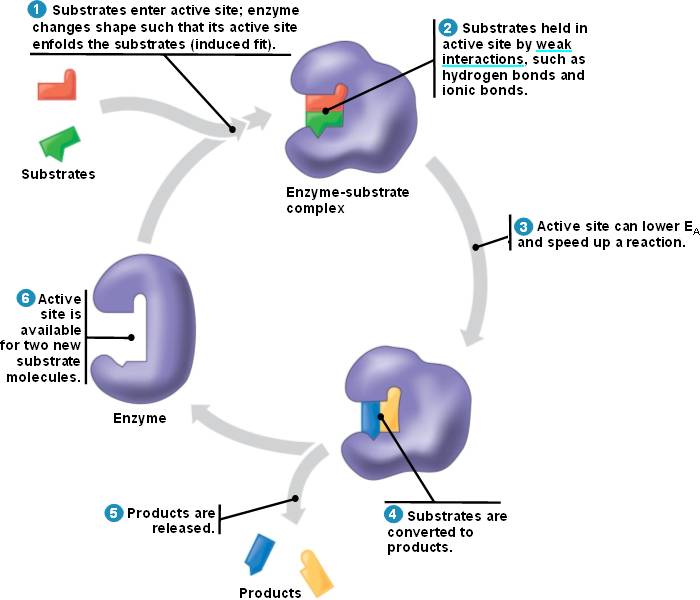Enzymes are biological catalysts that speed up chemical reactions within the body without being consumed. They can be used over and over again.
All reactions require an initial input of energy, called activation energy. Enzymes lower this activation energy as shown in the diagram to the left.
Key terms:
Substrate - the reactants which the enzyme acts on.
Enzyme-substrate complex - the complex formed when the substrate molecules bind to the enzyme.
Active site - where the substrates bond to the enzymes
Cofactors - non-organic enzyme helpers
Coenzymes - organic enzyme helpers
Allosteric site - another region on the enzyme where materials can bond to the enzyme locking it in either its active or inactive shape.
Feedback inhibition - when the product of the reaction bonds to the allosteric site of an enzyme locking it into its inactive form.
The cycle:
The below image is a good summary of how the catalytic cycle works.
Inhibition:
There are two types of inhibition: competitive and non competitive.
Competitive - inhibitor competes with substrate to bind to the active site of the enzyme.
Non-competitive - inhibitor binds to the allosteric region of enzyme.
Here is a video showing the importance of enzymes in out body.


No comments:
Post a Comment